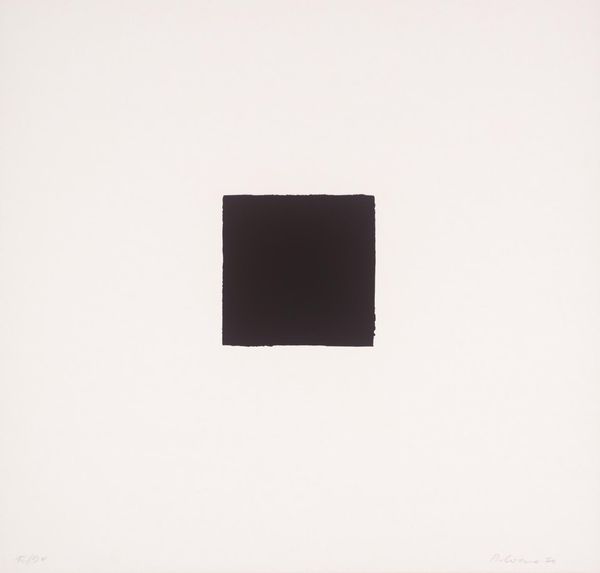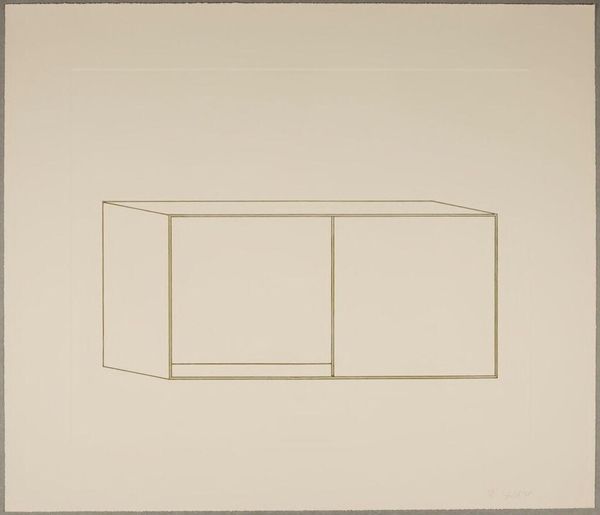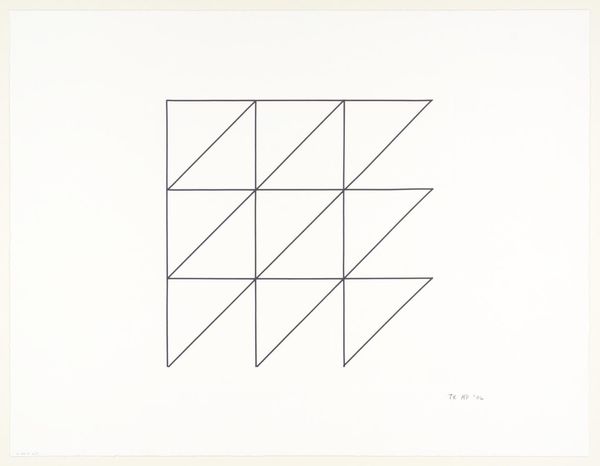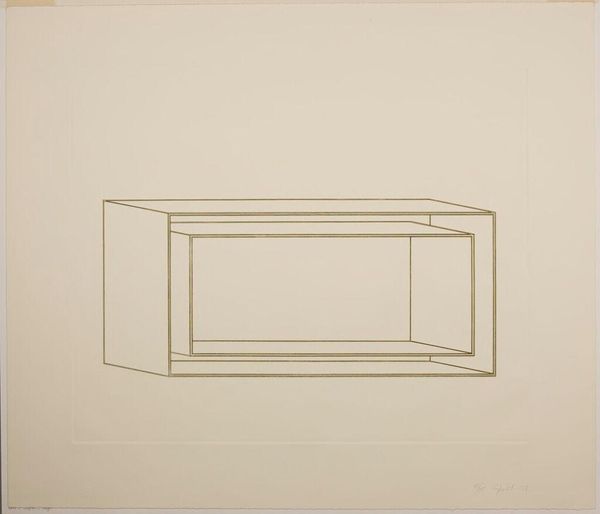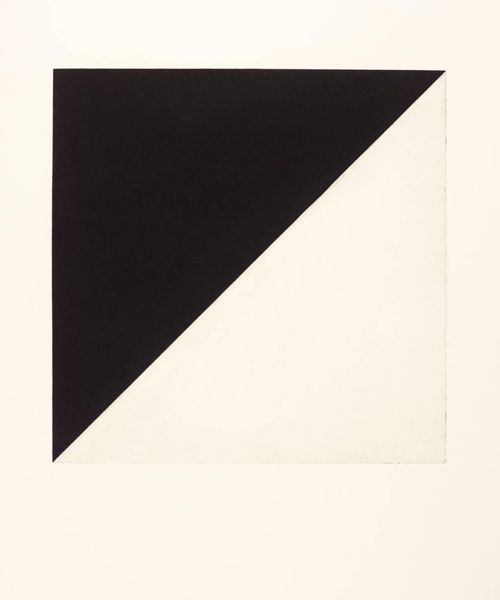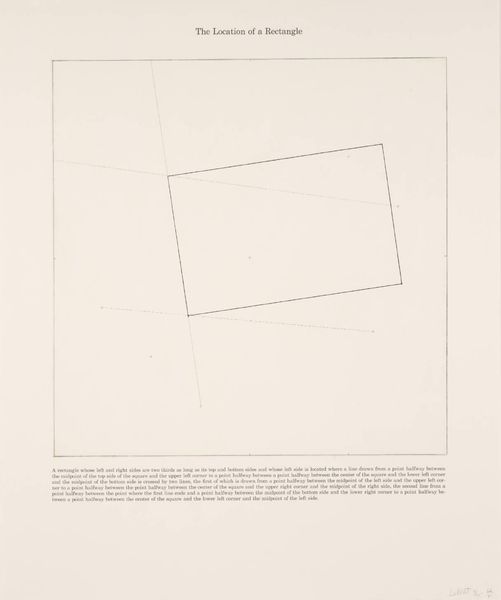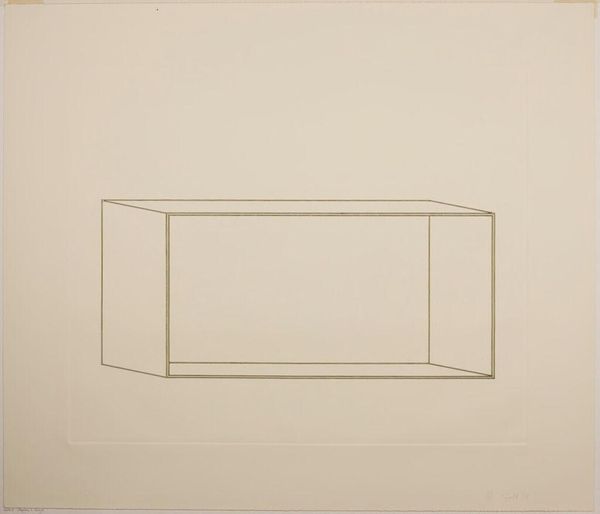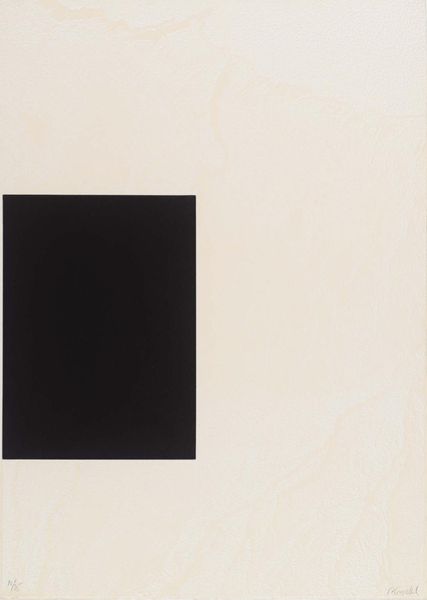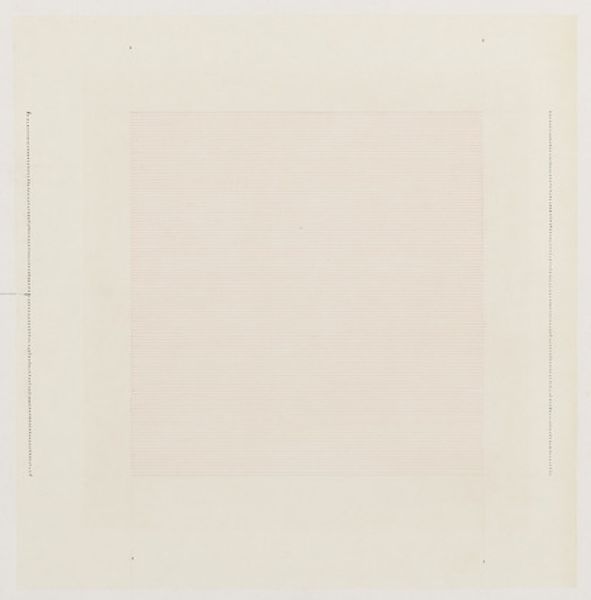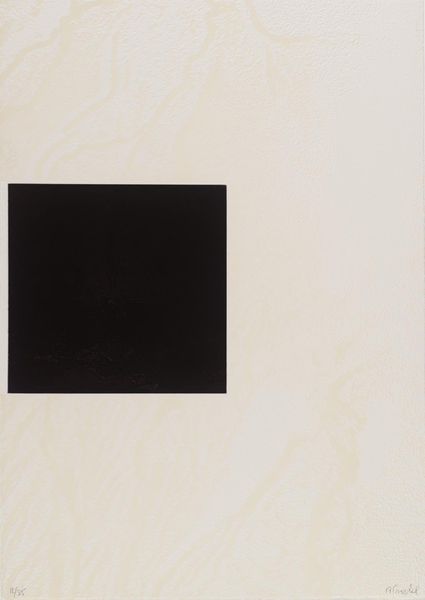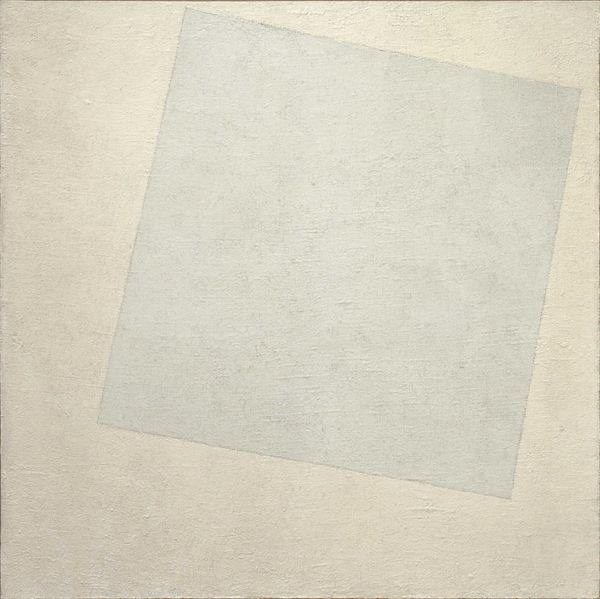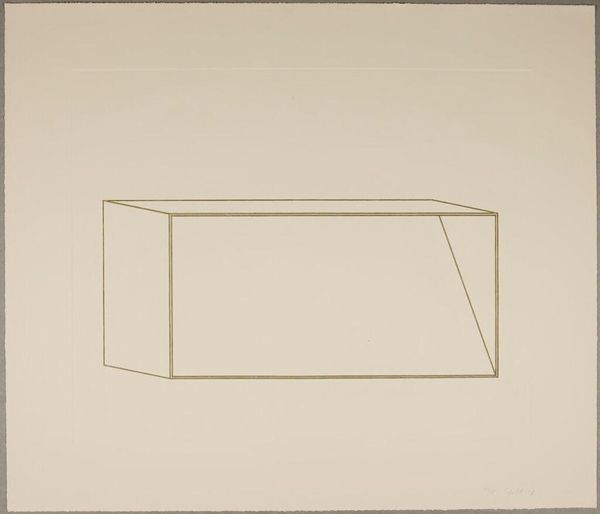
drawing, print, ink
#
drawing
#
conceptual-art
#
minimalism
# print
#
form
#
ink
#
geometric
#
line
Dimensions: sheet: 48.58 × 63.82 cm (19 1/8 × 25 1/8 in.)
Copyright: National Gallery of Art: CC0 1.0
Editor: So, here we have Fred Sandback's "Untitled" from 1975, a print made with ink on paper. It's strikingly simple, just a brown, somewhat irregular quadrilateral floating on a white field. What strikes me is the starkness, the lack of any representational subject matter. How would you approach interpreting a piece like this? Curator: The apparent simplicity of the piece belies a deeper engagement with formal elements. Note the placement of the geometric figure on the page, which seems calculated to activate the surrounding negative space. The irregular form denies any easy categorization and forces the viewer to actively engage in its completion. How does the tone affect your reading? Editor: The color is quite subdued, earthy almost, which softens the geometric harshness. The texture, though, seems important - like it was hastily sketched, yet still meticulously rendered. Do you think that's intentional? Curator: The deliberate, if seemingly casual, application of ink implies the hand of the artist and highlights the inherent tension between the precision of geometry and the fallibility of human execution. This deliberate tension can be analyzed through a semiotic lens. The form itself functions as a sign, but what does it signify? Editor: Perhaps it's about drawing attention to the act of drawing itself. There isn't much else! Curator: Precisely! Sandback asks us to reconsider the basic elements of art. This aligns with the concerns of Minimalism; foregrounding the essence of artistic construction. Notice the nuances that become increasingly amplified and crucial: the line quality and orientation relative to the pictorial field. Editor: I hadn’t thought of it like that, viewing the drawing as pure form devoid of any additional narrative. Now, I’m looking at how the form itself dictates my reading. Curator: Indeed. Analyzing this, we have successfully navigated a shift in how meaning emerges not only from the represented object, but more from the structure through which this geometric sign can be seen, its composition, color and materials.
Comments
No comments
Be the first to comment and join the conversation on the ultimate creative platform.
